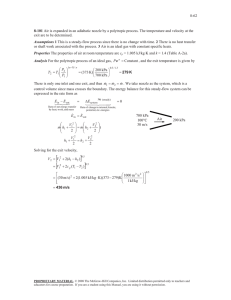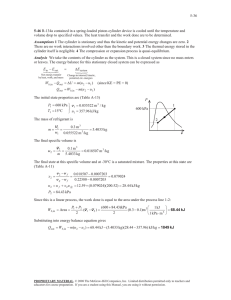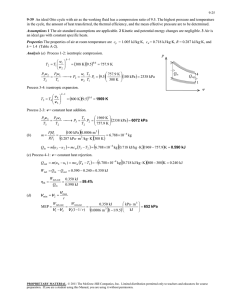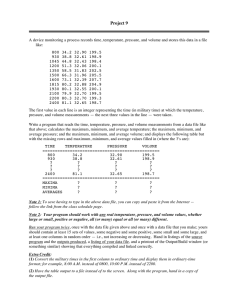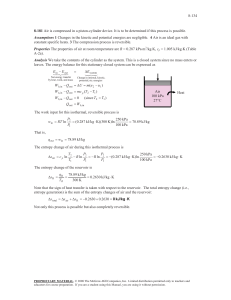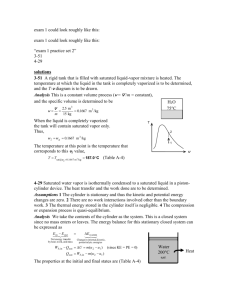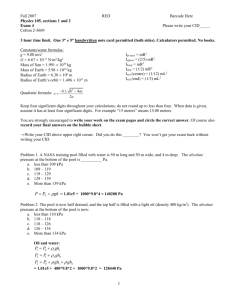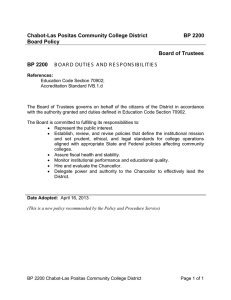advertisement
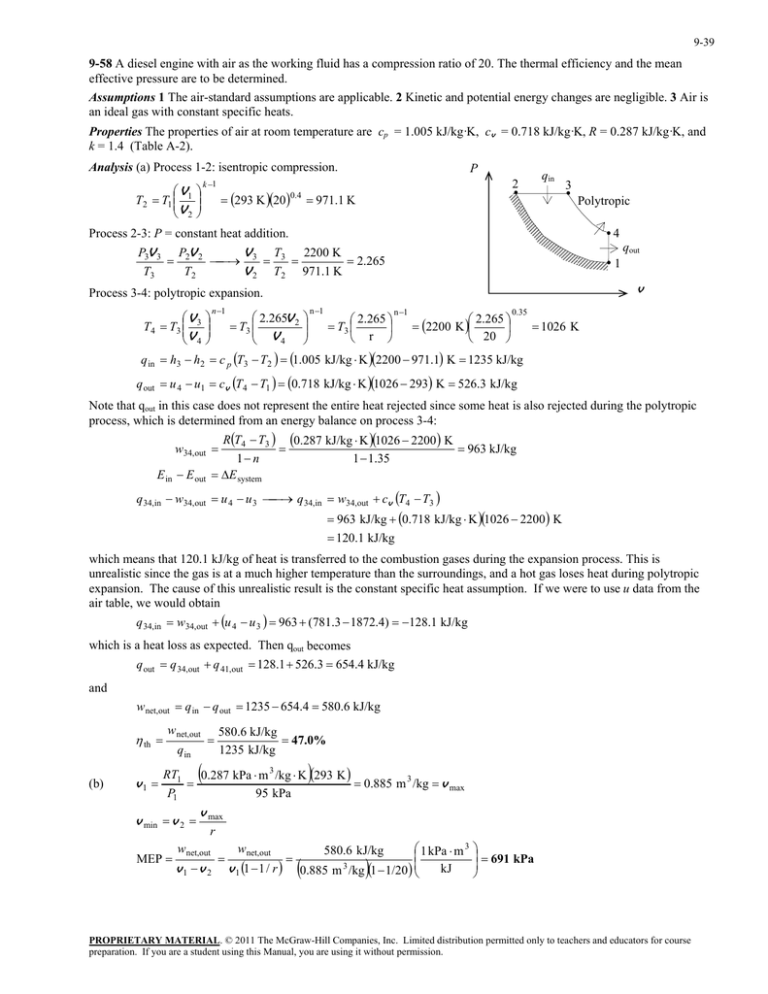
9-39 9-58 A diesel engine with air as the working fluid has a compression ratio of 20. The thermal efficiency and the mean effective pressure are to be determined. Assumptions 1 The air-standard assumptions are applicable. 2 Kinetic and potential energy changes are negligible. 3 Air is an ideal gas with constant specific heats. Properties The properties of air at room temperature are cp = 1.005 kJ/kg·K, cv = 0.718 kJ/kg·K, R = 0.287 kJ/kg·K, and k = 1.4 (Table A-2). Analysis (a) Process 1-2: isentropic compression. V T2 T1 1 V 2 k 1 P qin 2 293 K 20 0.4 971.1 K 3 Polytropic Process 2-3: P = constant heat addition. 4 qout P3V 3 P2V 2 T V 2200 K 3 3 2.265 T3 T2 V 2 T2 971.1 K 1 v Process 3-4: polytropic expansion. V T4 T3 3 V 4 n 1 2.265V 2 T3 V4 n 1 2.265 T3 r n 1 2.265 2200 K 20 0.35 1026 K q in h3 h2 c p T3 T2 1.005 kJ/kg K 2200 971.1 K 1235 kJ/kg q out u 4 u1 cv T4 T1 0.718 kJ/kg K 1026 293 K 526.3 kJ/kg Note that qout in this case does not represent the entire heat rejected since some heat is also rejected during the polytropic process, which is determined from an energy balance on process 3-4: RT4 T3 0.287 kJ/kg K 1026 2200 K 963 kJ/kg 1 n 1 1.35 E system w34,out E in E out q 34,in w34,out cv T4 T3 q 34,in w34,out u 4 u 3 963 kJ/kg 0.718 kJ/kg K 1026 2200 K 120.1 kJ/kg which means that 120.1 kJ/kg of heat is transferred to the combustion gases during the expansion process. This is unrealistic since the gas is at a much higher temperature than the surroundings, and a hot gas loses heat during polytropic expansion. The cause of this unrealistic result is the constant specific heat assumption. If we were to use u data from the air table, we would obtain q 34,in w34,out u 4 u 3 963 (781.3 1872.4) 128.1 kJ/kg which is a heat loss as expected. Then qout becomes q out q 34,out q 41,out 128.1 526.3 654.4 kJ/kg and wnet,out q in q out 1235 654.4 580.6 kJ/kg th (b) v1 wnet,out q in 580.6 kJ/kg 47.0% 1235 kJ/kg RT1 0.287 kPa m 3 /kg K 293 K 0.885 m 3 /kg v max 95 kPa P1 v min v 2 MEP v max r wnet,out v1 v 2 wnet,out v 1 1 1 / r 1 kPa m 3 kJ 0.885 m 3 /kg 1 1/20 580.6 kJ/kg 691 kPa PROPRIETARY MATERIAL. © 2011 The McGraw-Hill Companies, Inc. Limited distribution permitted only to teachers and educators for course preparation. If you are a student using this Manual, you are using it without permission.
